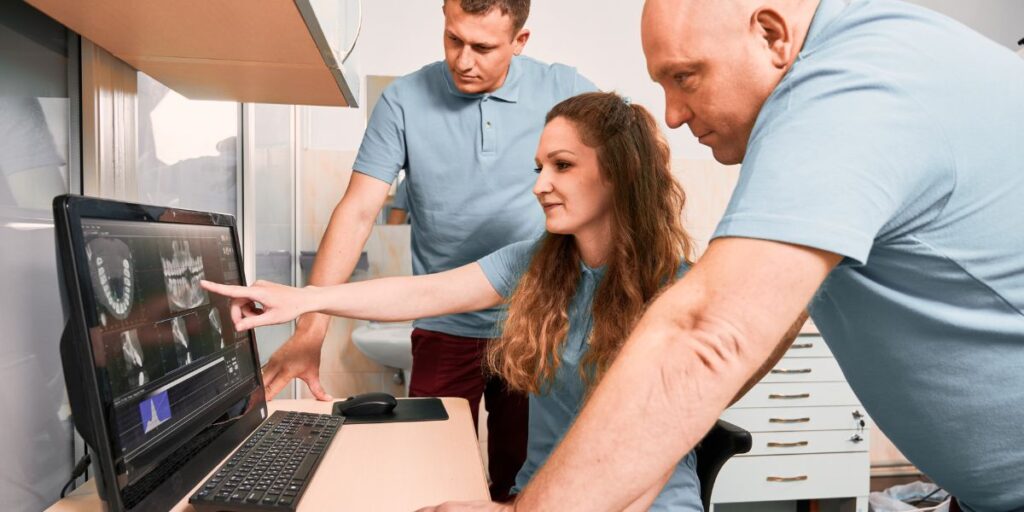What is DICOM and its Advantages in Healthcare?

On a daily basis, the healthcare industry must transfer sensitive information. Thankfully, the evolution of medical technology in the healthcare industry has led to a seamless exchange of information. New and innovative solutions, like DICOM, have simplified image transfers with its universal format benefiting both patients and healthcare providers.
What is DICOM?
DICOM, or Digital Imaging and Communication in Medicine, is a standard format that is used by most Picture Archiving and Communication System (PACS) solutions. It is a global standard used in healthcare to ensure coherent interaction between disparate systems that produce, process, store, and transmit medical imaging information.
The first version of DICOM was developed in 1985, becoming widely used within hospitals in 1993. Without DICOM, there was no standard format for images, which meant each healthcare organization used its own proprietary format, making it difficult to transfer images between devices of different organizations.
This technology has revolutionized the medical imaging industry: it created a standard format for all healthcare organizations to use, allowing the transmission of medical images.
How is DICOM Used in Healthcare?
Though DICOM is primarily used in radiology, almost every healthcare sector is now using the format including dental offices, surgeons, and pathology. DICOM is an important standard for the healthcare sector, enabling the interoperability of medical systems and devices from different manufacturers. When facilities need to share images and data between multiple devices and healthcare providers, DICOM can be beneficial. DICOM enables better workflow, allowing easy exchanges of information—improving diagnosis and treatment.
Advantages of DICOM:
Reduces Errors
Since DICOM provides a standardized way to store, send, and receive medical images and information without the need for manual data entry, it reduces errors and improves efficiency. An example of this would be DICOM’s use to provide worklist data to the modality.
Patient Care Focused
If a patient has undergone many radiology scans and from different locations, then multiple healthcare providers need access to those medical images. The DICOM format makes collaborations easier.
Improved Decision Making
Healthcare facilities can transfer medical images while maintaining the original picture quality and ensuring the standardization of the image format along with the corresponding image data attributes that are included with the image data.
How is DICOM Connected to PACS?
As healthcare organizations are becoming more digitized, the need for all this data to be securely stored and shared becomes more prevalent. PACS is a picture archiving and communications system that electronically stores images and reports, rather than the old methods of manual storage and sharing. PACS technology uses this universal format to streamline the process of sharing images and information. DICOM images are often stored in PACS, which can store and send medical image files and information received from scanning machines. PACS provide guarantees of compliance with healthcare regulations and provide data accuracy.
Aspyra Providing You with Enterprise Medical Solution
DICOM is the standard which all radiological devices and Aspyra’s PACS solutions are built around. Our medical technology solutions provide effective tools designed to optimize workflow. Our team works hard every day to implement the best software and services. We help healthcare organizations focus on taking care of patients and employees. To learn more about our PACS solutions and Aspyra’s services, contact a member of our team.

